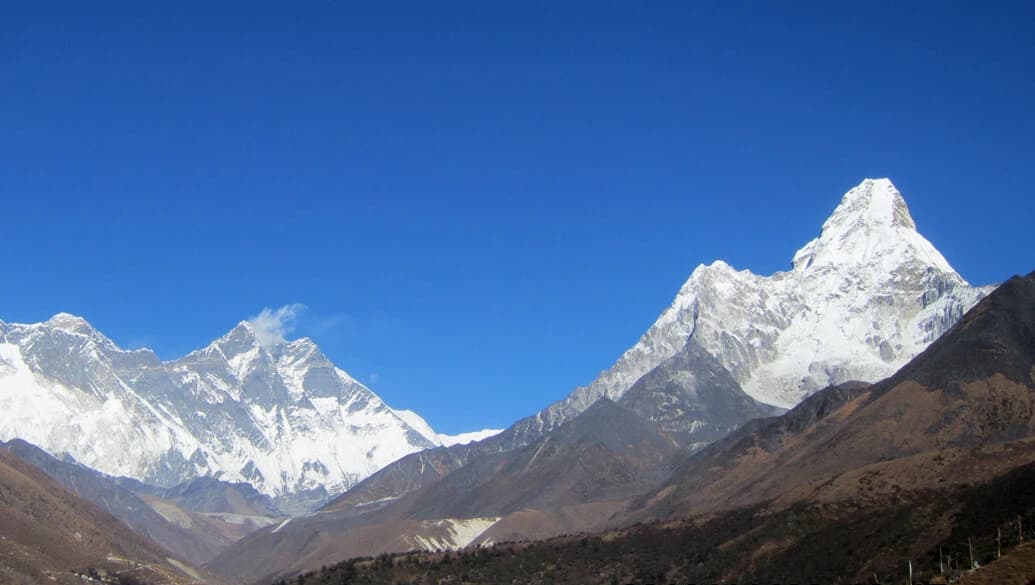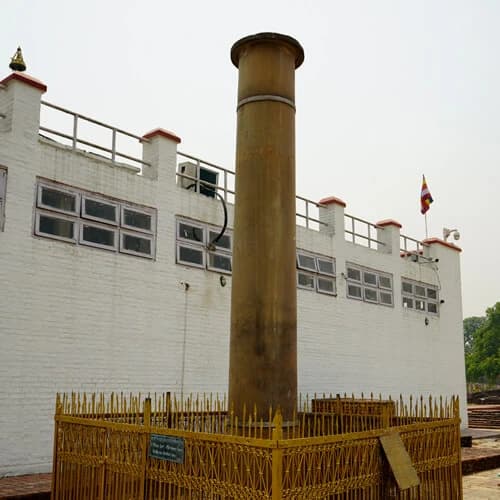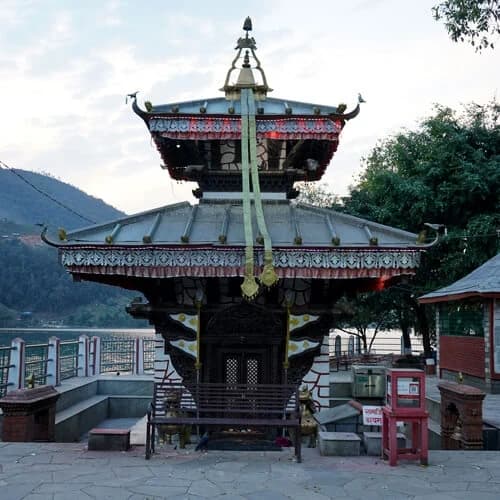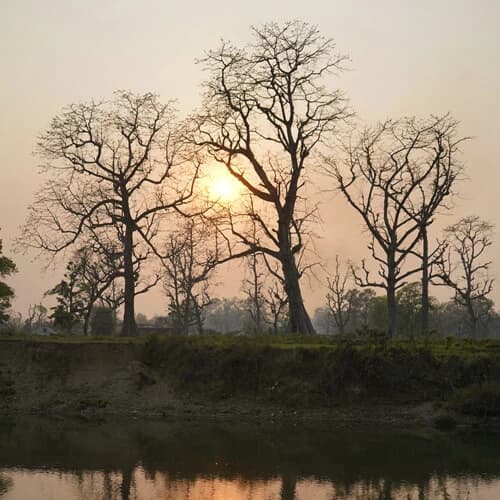Ama Dablam Base Camp Trip highlights
- Get a close-up view of one of the most beautiful mountains in the Himalayas, popularly known as the "Matterhorn of Nepal" because of its steep, towering peak.
- Trek through lush rhododendron forests and suspension bridges and witness Himalayan wildlife in Sagarmatha National Park, a UNESCO World Heritage Site.
- Stay in authentic teahouses run by local families and experience top-notch hospitality, local food, and Buddhist culture.
- Tour one of the most sacred monasteries in the Khumbu, such as Tengboche Monastery and Pangboche Monastery, set against the stunning backdrop of Everest, Lhotse, and Ama Dablam.
- Compared to the other crowded treks, this trail offers a quieter, more tranquil experience with equally breathtaking vistas.
- With our well-planned itinerary, you can reach a high elevation of around 4,600m (Ama Dablam Base Camp), which includes an acclimatization day at Namche Bazaar.
Overview of the Ama Dablam Base Camp Trek
The Ama Dablam Base Camp Trek is an 11 days Himalayan journey with spectacular scenery and cultural richness. Ama Dablam at 6,812 meters (22,349 feet) is one of the most dramatic and familiar Himalayan summits. It has been nicknamed the "Matterhorn of the Himalayas" due to its notched ridges and steep, awe-inspiring faces. Ama Dablam Base Camp is the main highlight of this trip for mountaineers who want to climb to its renowned summit. With its stunning and unique shape, the mountain dominates the Everest trekking route, making it one of the most desired summits in the area.
Ama Dablam has attracted climbers since its initial successful climb on March 13, 1961, by an expedition team organized by Sir Edmund Hillary. You will follow their steps into the Khumbu region, along Sherpa villages, pine forest, and alpine pastures. Additionally, along the way, you'll pass through Namche Bazaar, the historical Tengboche Monastery, and awe-inspiring views of Everest, Lhotse, and Thamserku. Unlike the other busier route, this trail provides a quieter and more intimate experience of the Himalayas. This trek is ideal for those looking for a less crowded but rewarding experience. The 11 days Ama Dablam Base Camp Trek is packed with natural beauty, spiritual experience, and authentic Sherpa hospitality. It is a once-in-a-lifetime trek for adventure and mountaineering seekers alike.
Ama Dablam- One of the most beautiful mountains in the world
Ama Dablam is one of the world's most photographed and visually stunning peaks. It is located in Nepal's Khumbu district, just 12 kilometers south of Mount Everest. Ama Dablam rises to a height of 6,812 meters/ 22,349 feet. Its pyramid shape, with great ridges and steep faces, makes it a favorite among climbers, trekkers, and photographers. The name "Ama Dablam" is "Mother's Necklace" in Sherpa, named after the glacier on the mountain that resembles a religious pendant carried by Sherpa women. Beyond its breathtaking beauty, Ama Dablam also has deep spiritual and cultural significance to the indigenous Sherpa people, often held as the region's guardian deity. Whether admired from nearby trekking routes or scaled by seasoned climbers, Ama Dablam's graceful silhouette and striking presence impact all who see it.
What makes the Ama Dablam Base Camp Trek Special?
Ama Dablam Base Camp Trek offers a unique blend of natural beauty, cultural depth, and intimate mountain views. The off-the-beaten-path trek features pristine Himalayan scenery, fewer tourists, and authentic Sherpa village experiences. It is ideal for those who want an immersive experience with unobstructed views and a greater sense of peace and satisfaction.
- Stunning vistas of Ama Dablam, one of the most beautiful mountains in the Himalayas.
- It is less crowded than other routes, which makes for a more peaceful trekking experience.
- Panoramic vistas of Everest, Lhotse, Nuptse, and other Himalayan giants.
- Experience a rich Sherpa culture with stops in charming villages and monasteries.
- Spiritual significance is associated with visits to sacred sites like Tengboche Monastery.
- Diverse scenery, from lush forests to alpine landscapes.
- Perfect for adventure travelers who desire a short but quality Himalayan experience.
What to Expect in Ama Dablam Base Camp Trekking?
The Ama Dablam Base Camp Trek offers a perfect mix of adventure, culture, and breathtaking scenery. You'll trek through Sherpa villages, visit ancient monasteries, and enjoy up-close views of towering Himalayan peaks. The trail is moderately challenging, offering peaceful paths, rewarding climbs, and an authentic Himalayan experience away from the crowded Everest Base Camp route.
Low Altitude Moderate Trek
The Ama Dablam Base Camp journey is a gentle adventure at a height of 4,600 meters, from which one can either remain comfortably in the base camp or return to Pangboche (3,930m) to stay overnight. The hike is fantastic for Ama Dablam scenery, with opportunities to spot Everest, Lhotse, Cho Oyu, and the other Himalayan titans. It's perfect for those seeking high-altitude beauty without being affected by high altitude.
Features extend the route towards other destinations of the Everest Region
Ama Dablam Base Camp Trek is a flexible trek that you can extend to the trail of the iconic Everest area. You can also include destinations like Gokyo Ri and the beautiful Gokyo Lakes. If you have previous experience in high-altitude training, you can also extend your trip with additional destinations.
Highly Experienced Guide
We provide experienced and government-approved guides to assist you with navigation during the journey. Our guides are well-trained, with previous high-altitude trekking experience, knowledge of the landscape, and medical expertise. Their experience is highly appreciated by trekkers and helps make your adventure easier, safer, and worth it.
Ama Dablam Base Camp Trek Cost Details
The 11-day Ama Dablam Base Camp Trek costs from—to -. The rate depends on numerous factors, such as the length of the trek, group size, type of accommodations, mode of transport, and quality of services involved in the package. Upgrading services and facilities according to your needs also increases the overall price of the package.





